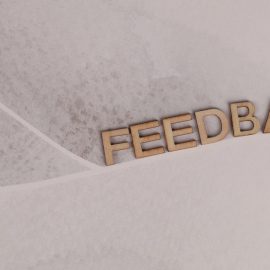

This article is an excerpt from the Shortform book guide to "The Squiggly Career" by Helen Tupper and Sarah Ellis. Shortform has the world's best summaries and analyses of books you should be reading.
Like this article? Sign up for a free trial here.
Are you struggling with self-doubt in your career? Do you want to boost your confidence and achieve your goals?
In The Squiggly Career, Helen Tupper and Sarah Ellis share advice on overcoming “confidence gremlins” in the context of nonlinear careers. They offer practical methods to overcome limiting beliefs, acknowledge your successes, and build a strong support system.
Read on to learn three ways to build self-confidence as you chase your career dreams.
Overcoming Confidence Gremlins
Tupper and Ellis write that confidence gremlins can hold you back when you’re pursuing a nonlinear career. They highlight the importance of believing in your capacity to achieve your goals, acknowledging your success, and being resilient in the face of challenges. Self-confidence is crucial in non-linear careers for three reasons.
First, self-confidence inspires you to take action toward your goals with less deliberation, helping you forge your own path and achieve goals faster. Second, self-confidence helps you persevere when you encounter setbacks and challenges. Third, being confident in yourself inspires others to be confident in you as well, making you a valuable asset to teams and organizations.
(Shortform note: In The Six Pillars of Self-Esteem, Branden argues that to achieve true success in life, you need to have more than just self-confidence—you need to have self-esteem. His concept of self-esteem includes Tupper and Ellis’s definition of self-confidence and also encompasses the belief that you’re an inherently good and valuable person who deserves happiness. Having self-esteem is beneficial because, in addition to the results of self-confidence listed by the authors, self-esteem increases independence, creativity and intuition, and rationality.)
Tupper and Ellis offer three main methods you can use to build your confidence.
Method 1: Overcome Limiting Beliefs
Tupper and Ellis’s first method for building your confidence is overcoming your limiting beliefs—thoughts that diminish your self-worth and hold you back from reaching your goals. For example, believing you can’t learn a hard skill or that others will always be better than you.
The first step in overcoming your limiting beliefs is identifying them. To do so, consider what you’re afraid of, what you want to do but don’t, and what negative thoughts you have about yourself. Then, ask yourself why you believe these things—for example, you don’t like talking to new people because you’re afraid they’ll reject you.
(Shortform note: In Awaken the Giant Within, Robbins provides additional recommendations for releasing limiting beliefs. He says that once you’ve identified them, consider not only why you believe these things, but why they might be ridiculous, who you learned each belief from and whether they’re a good influence, the costs and benefits of holding onto the beliefs, and the costs and benefits of letting them go. This will help you better direct your efforts to overcoming the belief, for example, by giving you confidence to face your fears and detach from negative influences in your life.)
Next, Tupper and Ellis say you must face your fears and challenge your limiting beliefs to disprove them. For example, face your fear of talking to new people by finding someone new to start a conversation with. Most of the time, you’ll realize that your fear doesn’t manifest or that it’s actually not as bad as you thought. This will help you build confidence in yourself and overcome the things holding you back. Regularly challenge yourself to continue making progress.
(Shortform note: In The Comfort Crisis, Michael Easter explains that facing your fears is difficult for most people because we dread the anxiety that comes from leaving our comfort zone. However, there are small things you can do regularly to strengthen your ability to break out of your comfort zone. For example, going into nature on a regular basis better equips you to face your fears by reducing anxiety, depression, and anger. In particular, Easter recommends spending 20 minutes in nature (even if it’s a city park) at least three times a week, at least five hours in a rural area (outside the city) every month, and at least one three-day trip to the wilderness (outside of civilization) every year.)
Method 2: Acknowledge Your Success
The authors’ second method to build self-confidence is to acknowledge your successes. Many people struggle with self-confidence because we have the tendency to remember our failures more than our successes, therefore building a false negative track record for ourselves in our minds.
(Shortform note: We tend to remember our failures more than our success due to the negativity bias—a natural cognitive bias that causes negative events to more significantly impact us than positive events. Experts theorize that this bias developed as an evolutionary adaptation—we’re more focused on negativity so we can avoid what can harm us and keep ourselves safe.)
To counter this, the authors say you should start recording all your successes of the day—how you helped yourself, and others, in different contexts. Further, remember that success is subjective—rather than comparing yourself to others or an objective idea of success, consider what success means to you.
(Shortform note: In Steal Like an Artist, Austin Kleon also recommends overcoming our tendency toward negativity by keeping track of positive experiences in a “praise file”—this way, all your positive reminders are in one, easily accessible digital file. He specifically recommends keeping track of positive comments you receive from others; however, you can use it to record any success or positive experience.)
Method 3: Build a Support System
Finally, Tupper and Ellis argue that it’s crucial to have a solid system of supporters in order to build self-confidence. You should ensure your support system includes at least one person who can offer unconditional love (like a parent), one who can empathize with your circumstances, one who can give situational advice, and one who can give honest feedback.
(Shortform note: In Bold, Peter Diamandis and Steven Kotler also recommend building a system of close supporters to help you succeed in your career. However, they note that these people are useful for more than just building self-confidence—they can also help you build your business or personal brand by offering critical feedback, personal connections to build your network (which is important for Ability 4), and resources you may need along your journey.)
Further, say Tupper and Ellis, ensure there’s balance in these relationships—don’t rely too frequently or heavily on someone. You also want to ensure that the relationship is somewhat mutual—that you or the other person isn’t expecting support without returning it. Failing to do these things can create dependent relationships that hinder autonomy.
(Shortform note: Even if you’re in mutually supportive relationships, you can still end up overly dependent. For example, if you struggle to make decisions without others’ input, struggle to start things on your own, feel the need for others’ approval, or are unable to enforce personal boundaries, you may have a dependency problem.)

———End of Preview———
Like what you just read? Read the rest of the world's best book summary and analysis of Helen Tupper and Sarah Ellis's "The Squiggly Career" at Shortform.
Here's what you'll find in our full The Squiggly Career summary:
- How the nature of work and career paths has changed dramatically since the early 2000s
- The five abilities workers need to succeed in today’s environment
- Why climbing the corporate ladder might not be for you






